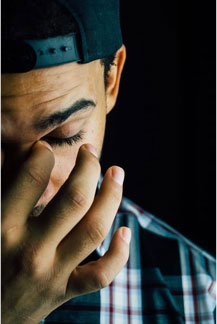Suicide Warning Signs

10 Suicide Warning Signs in Young People
“Each day in our nation there are an average of over 5,400 suicide attempts by young people grades 7-12,” according to the American Society for the Positive Care of Children, or American SPCC. This is just one of the many alarming statistics about young people and suicide. Although it can be hard to tell when someone is contemplating suicide, there are signs you may recognize if you know to look for them. Listed below are 10 possible suicide warning signs. It is worth noting that some of these signs are similar to the signs of depression. Depression and suicide are closely tied, so these are very important to be aware of.
Signs to Look Out For
- The individual is talking about wanting to hurt or kill themselves. Talk of suicide must always be taken seriously. You may even notice the person writing these thoughts in notes or a journal. If you or someone else are thinking or talking about suicide, call 911 immediately. The National Suicide Prevention Lifeline may also be reached at 1-800-273-TALK (8255).
- The person is expressing hopelessness about the future. When someone expresses hopelessness there is definitely something going on, and this must never be taken lightly.
- The individual begins giving away treasured possessions to family or friends. These are items the person would never give away under ordinary circumstances. This may mean that the person wants the belongings to go to loved ones because they have no intention of being around much longer.
- There is change in eating habits. The individual may eat little or not at all, or conversely, overeat. When a significant change like this occurs, further investigation is always advised.
- The individual is sleeping too much or too little. Often a person contemplating suicide either can’t turn off their brain to sleep, or are so lacking in motivation for life that they sleep all the time.
- The person seems to be losing interest in their favorite activities. Often, a person considering suicide will not have the motivation to go to place or partake in things they loved in the past.
- The individual begins withdrawing or feeling isolated. People suffering from severe depression with suicidal thoughts will withdraw from everything, mostly relationships and interaction. They choose to be alone rather than participate in any activities or spend time with the people they love most.
- There is an unusual neglect of personal appearance. The individual may stop taking care of their outward appearance due to a complete disregard for personal care. Or there may also be extreme alterations to their “normal” appearance.
- The person is experiencing changes in personality. They can go through many extreme emotional and mood changes involving sadness, withdrawal, irritability, anxiety, exhaustion, and indecision. These are classic signs for both depression and suicidal feelings.
- The individual may be “acting reckless or engaging in risky activities – seemingly without thinking.” Some of these reckless or risky activities may include reckless driving, drinking, taking drugs, or having unprotected sex. The person may feel that because they intend to die, it doesn’t matter how unsafe their behavior is.
Addiction and Suicidal Thoughts
Drug use and addiction may lead to suicidal thoughts, and vice versa. There are many ways to learn about or seek help for addiction. Whether you’re a member of the African American, Asian American, Native Hawaiian, or Pacific Islander, Hispanic or Latino, LGBTQ, or another of the many communities out there, there is help for you.
Please remember, if you or someone you know is in imminent danger call 911 immediately. Whether in imminent danger or not, you may also call the National Suicide Prevention Lifeline at 1-800-273-TALK (8255). Take action to help yourself or someone you know.
Steve Johnson has always been dedicated to promoting health and wellness in all aspects of life. Studying in the medical field has shown him how important it is for reputable health-related facts, figures, tips, and other guidance to be readily available to the public. He created PublicHealthLibrary.org with a fellow student to act as a resource for people’s overall health inquiries and as an accurate and extensive source of health information. When he isn’t hard at work in his studies, Steve enjoys playing tennis and listening to his vintage record collection.